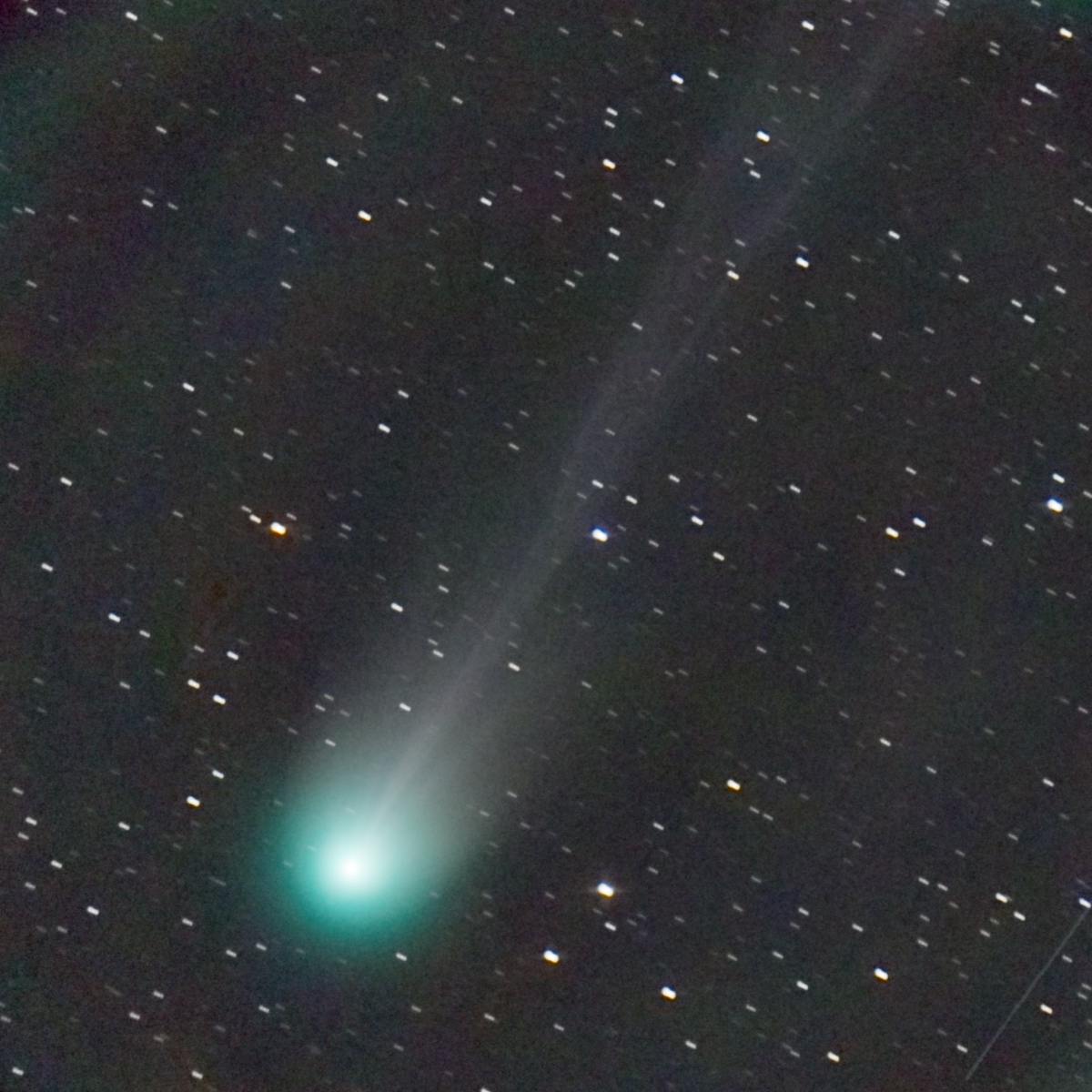- 1Observatoire de Paris, LESIA, Meudon, France (nicolas.biver@obspm.fr)
- 2IRAM, 300, rue de la Piscine, F-38406 Saint Martin d'Hères, France
- 3Solar System Exploration Division, Astrochemistry Laboratory Code 691, NASA-GSFC, Greenbelt, MD 20771, USA
- 4Department of Physics, Catholic University of America, Washington, DC 20064, USA
- 5Jet Propulsion Laboratory, California Institute of Technology, 4800 Oak Grove Drive, Pasadena, CA, 91109, USA
- 6Department of Physics, American University, 4400 Massachusetts Ave NW, Washington, DC 20016, USA
- 7Physikalisch-Meteorologisches Observatorium Davos und Weltstrahlungszentrum, Dorfstrasse 33, CH-7260, Davos Dorf, Switzerland
- 8Institute for Astronomy, University of Edinburgh, Royal Observatory, Edinburgh, EH9 3HJ, UK
Comet 12P/Pons-Brooks is a great Halley-family comet with an orbital period of
71 years, that was first seen in 1385, and possibly earlier. It returned
to perihelion on 21 April 2024 at 0.78 au from the Sun (Fig.1)
Its peak outgassing rate exceeded QH2O=1030 molec.s-1, with a
total visual magnitude of 4 in April and the comet was the focus of a
worldwide observing campaign.
We report observations of the comet with IRAM-30m and NOEMA facilities
on 20 January, 17, 20 March, and 22-28 April 2024. A frequency survey at
3, 2 and 1 mm wavelengths, covering 8, 24 and 63 GHz respectively, was undertaken in April
under average weather conditions.
Several molecules and isotopologues were detected. We have derived expansion
velocity, gas temperature and production rates or upper limits on molecular
abundances. Around perihelion we measured an expansion velocity around 1.1 km/s
and a gas temperature of around 105 K.
Lines of HCN, HNC, HC3N, CH3CN, HNCO, NH2CHO, CH3OH, H2CO, CO, HCO+, CS,
H2S, OCS, SO, C34S and possibly (CH2OH)2 have been detected (Fig.2) and the molecular
abundances will be presented. This is the most detailed chemical
inventory of a Halley-family comet obtained so far. The composition of 12P
will be compared to previously investigated long- and short-period
comets.

Figure 1: Comet 12P/Pons-Brooks on 6.83 March 2024 UT. Visible image obtained with a 40.7-cm telescope, Field of view is 40x40 arcmin. (c) N. Biver
Figure 2: Sample average spectra of lines observed with IRAM-30m in April 2024.
The vertical scale in main beam brightness temperature (in K) is preliminary.
Horizontal axis is Doppler velocity in the rest frame of the comet.
Acknowledgements:
This work is based on observations carried out under projects number W23AA001 and 066-23 with the IRAM NOEMA Interferometer and 30m telescopes.
IRAM is supported by INSU/CNRS (France), MPG (Germany) and IGN (Spain). Part of this research was carried out at the Jet Propulsion Laboratory, California Institute of Technology, under a contract with the National Aeronautics and Space Administration (80NM0018D0004).
How to cite: Biver, N., Boissier, J., Bockelée-Morvan, D., Crovisier, J., Moreno, R., Cordiner, M., Lis, D. C., Roth, N., Bonev, B., Milam, S., Drozdovskaya, M., and Opitom, C.: Investigating the composition of Halley-family comet 12P/Pons-Brooks with IRAM radio telescopes, Europlanet Science Congress 2024, Berlin, Germany, 8–13 Sep 2024, EPSC2024-371, https://doi.org/10.5194/epsc2024-371, 2024.